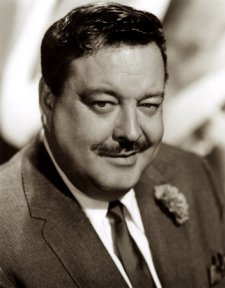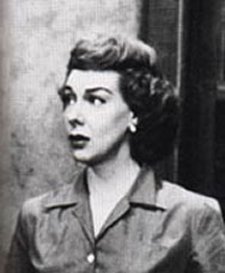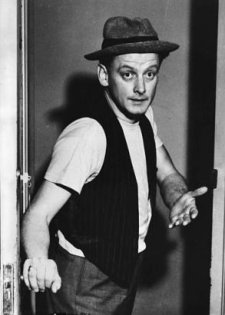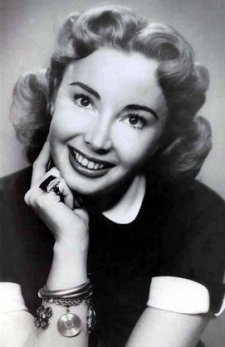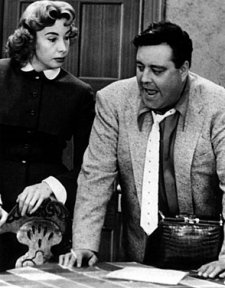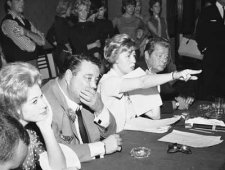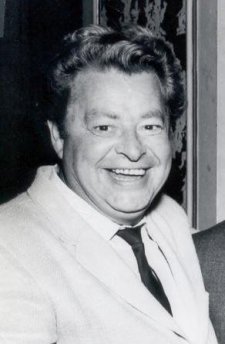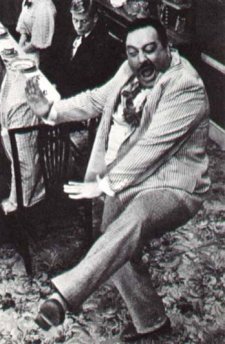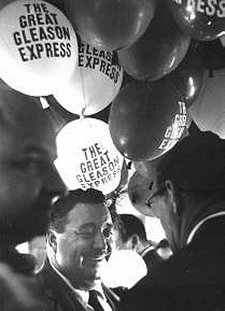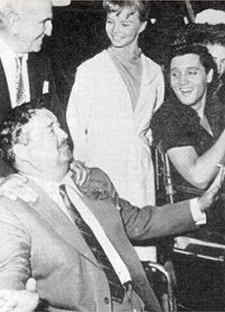The lure of
money brought The Jackie Gleason Show to CBS in the fall of 1952. The
rotund comic had been starring in The Cavalcade of Stars on DuMont since
the summer of 1950 and had developed into one of the few genuine successes on
that money-poor network. When CBS offered him a staggering increase in weekly
pay – reportedly $8,000 compared to the $1,600 that DuMont could afford –
coupled with the funding to make his show a much more elaborate production, he
could scarcely refuse.
Jackie's
original CBS variety hour, done live from New York, bore a strong similarity to
his previous show on DuMont, albeit with a much larger budget. His second
banana, Art Carney, made the move with him, as did the June Taylor Dancers and
Ray (“the Flower of the Musical World”) Bloch’s Orchestra. Audrey Meadows and
Joyce Randolph were added to the cast of regulars, primarily in “The
Honeymooners” sketches, and most of the characters that Gleason had developed on
DuMont were honed to perfection on CBS. Among them were, in addition to The
Honeymooners Ralph Kramden, were The Poor Soul, Joe the Bartender,
The Loudmouth, Reggie Van Gleason - III, Rudy the Repairman, and Fenwick
Babbitt. "The Great One," as Jackie was called, opened each telecast with a
monologue and then led into the first sketch with "And awa-a-aay we go," as he
left the stage. His other catchphrase, used in reaction to almost anything at
all was "How sweet it is!"
The original
Jackie Gleason Show ran three seasons and was replaced, for the 1955-1956
season, with a half-hour situation comedy version of The Honeymooners.
When the variety show returned the following fall, it was with the same basic
cast and format, plus decorative additions in "Glea-Girls," 16 young models who
did little else than look beautiful and introduce various sketches. There was no
Gleason variety series during the 1957-1958 season, but Jackie was back in the
fall of 1958 with a modified half-hour format. Gone were all the regular cast
members from previous seasons and Buddy Hackett was added as Jackie’s second
banana. The chemistry wasn’t there and after only three months on the air, this
short version of The Jackie Gleason Show expired.
In the fall
of 1962, following an abortive failure with a quiz show (You’re in the
Picture) and the talk show (The Jackie Gleason Show) that replaced it in
1961, Jackie was back with a lavish full-scale variety show – The Jackie
Gleason Show: The American Scene Magazine. His new second banana was Frank
Fontaine (as Crazy Guggenheim in the Joe the Bartender sketches), who could sing
quite well when not in character and released a number of moderately successful
record albums during his tenure with Gleason. Not only were most of Jackie’s
standard characters in evidence, but a new "Agnes & Arthur" sketch about two
lovelorn tenement residents (with Alice Ghostley as Agnes) was added as a
semi-regular feature. The beautiful “Glea Girls,” including Barbara Heller as
“Christine Clam,” were still in evidence introducing the segments of each show,
but there was a considerable turnover in the supporting cast. There were more
topical satire in this show than in Jackie’s previous efforts, and more
appearances by name guest stars. In keeping with the title, there were entire
episodes that were done as musical comedies with book, lyrics, songs, dances,
and sketches reflecting “the American scene.” At Jackie’s insistence, the entire
production moved from New York to Miami Beach before the start of the 1964-1965
season, and remained in a Florida-based show throughout the remainder of its
run. A feature added the following year was a nationwide talent hunt, in which
George Jessel traveled around the country auditioning young performers who would
get their first national exposure on Jackie’s variety show.
The 1966-1967
season brought a basic change in format, a modified title, and a different
supporting cast. The title was shortened to The Jackie Gleason Show,
Art Carney was back with Gleason on a regular basis after a nine-year
absence, and Sheila MacRae and Jane Kean were the only other cast regulars. “The
Honeymooners” was brought back as the principal source of program material.
There were still variety shows with sketches and guest stars, special shows
devoted to single subjects like circuses or tributes to show-business greats,
and book musicals, but throughout this last four-year run over half of the
telecasts were full-hour “Honeymooners” episodes. Sometimes they were done
without music and other times they were done as musical comedies with songs and
production numbers. They took place in Brooklyn, around New York, and in
different locations around the world. They were done with and without guest
stars, but the constants were always there, the Kramdens (Jackie as Ralph and
Sheila as Alice) and the Nortons (Art as Ed and Jane as Trixie), middle-class
schleps bumbling their way through life.


